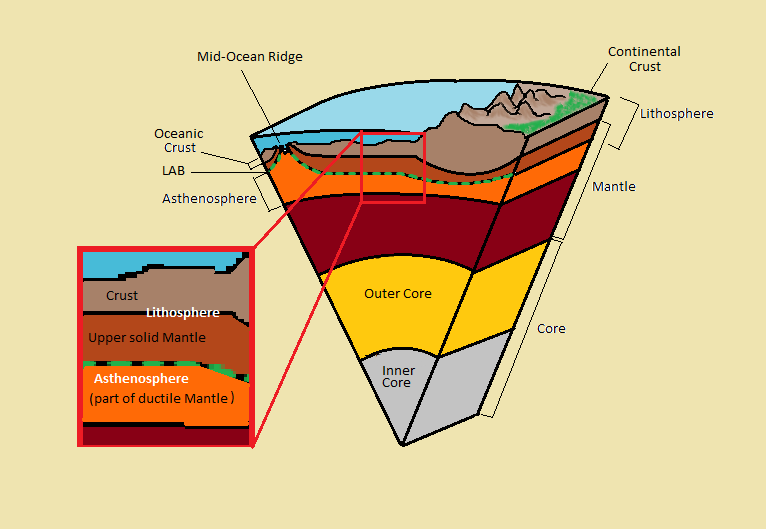CPT Q. 002: How can continental plates move laterally with roots that extend to depths of 200-250 km?

Q. 2. How can continental plates move laterally given the fact that most continental plates have lithospheric roots that extend to depths of 200-250 km into the asthenosphere?
Response: First of all, lateral motion of continents is possible only because there is this weak layer—generally referred to as the asthenosphere—beneath the continental plates whose presence results in a mechanical decoupling of an individual plate from the stronger mantle below. Because the strength of mantle rock varies inversely with temperature in an exponential way, the asthenospheric layer, which is typically several hundred degrees hotter than a lithospheric plate, is normally on the order of a thousand times weaker. (Because rock strength also depends on pressure and increases with pressure, below a depth about 300 km rock strength increases despite increasing temperature.) It is the striking contrast in strength between lithosphere and asthenosphere that results in this almost complete mechanical decoupling of the plates from the deeper mantle below. This decoupling occurs even when the base of the continent plate is not smooth and even when it has a ‘keel’ of strong and also probably buoyant rock (buoyant perhaps because it is depleted in iron). Again, this remarkable mechanical decoupling is because of the presence of such a weak asthenospheric layer.
Next, it useful to point out that continental lithosphere is usually comprised of an upper layer, typically about 35 km thick, of buoyant continental crust with an average density of about 2800 kg/m3 and a mean composition similar to that of granite and normally a thicker lower layer of ultramafic mantle rock with a density of about 3300 kg/m3. Most mountains are generally of continental crustal (i.e., granitic) composition and are generally isostatically compensated by means of a crustal root that may extend as deep as 70 km. It is normally the lower ultramafic layer of mantle rock that gives continental lithosphere most of its strength.
So then, what are the forces that cause a continental plate to move laterally? There are several different forces that come into play. First, a plate can have both a continental part and an ocean part. (The difference is that the continental portion has the layer of buoyant continental crust while the oceanic portion does not.) If an oceanic portion happens to be subducting, then the subducted part of the plate, being negatively buoyant relative to the mantle into which it is sinking, exerts what is referred to as a ‘slab pull’ force on the remainder of the plate. That force tends to drag the plate toward the subduction zone. On the other hand, for a plate that contains both a continental part and an oceanic part, the oceanic part can have a mid-ocean ridge as part of its boundary. If that is the case, there tends to be what is called a ‘ridge push’ force which acts along that boundary. The ridge push force can be shown to arise from the topographic elevation of the ridge. The other important class of force is the collisional interaction with other plates at their mutual boundaries. Generally speaking, the drag forces on the bases of the plates seem to be small and insignificant in comparison to these just mentioned, because of the extreme weakness of the asthenosphere. This general picture of the relative importance of the various forces is supported by various lines of observational evidence as well as computational modeling of these processes.